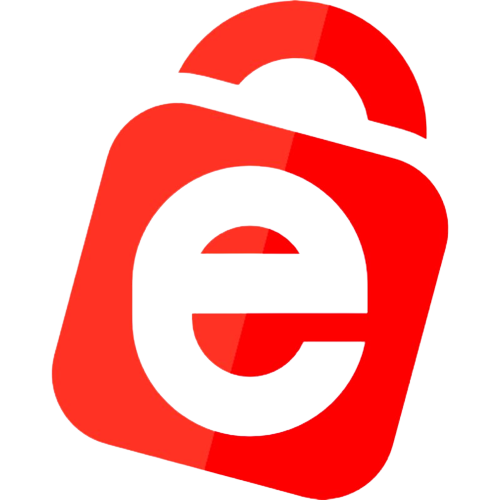Photos and videos take up a lot of storage space, and that's largely because we can take higher-quality photos with smaller camera sensors than ever before. The added file sizes are worth it since they allow you to capture key memories with immense clarity. But smartphones and other mobile devices don't typically offer a lot of storage space, so photos and videos can fill up your phone fast. That's why many people look to cloud storage services to fill this gap, which keep your photos secured in the cloud while freeing up on-device space.
There are a bunch of different cloud storage solutions for photos, from ones that are specifically designed for photos to others that store files generally. You've probably heard of the most well-known options, like Google Photos and Apple iCloud, but there are more out there as well. The best one for you might depend on what feature set you're looking for, so we've compiled a list of the best ones here.
Our favorite cloud storage services for photos in 2023

Google Photos
Google Photos is the most well-known cloud storage service for photos out there, and for good reason. It's available on nearly all platforms, and is easy to use. Plus, it's affordable and even offers a free tier with limited storage.
- Free tier includes 15GB of storage
- Paid tier unlocks editing features like Magic Eraser
- Great integration with Android
- Doesn't work as well on iOS
- Storage space shared with other Google services
Google Photos is a mix of two different services in one: a cloud storage solution and a capable photo and video editor. More impressive, it's free for up to 15GB of storage. Thanks to Google's free tier, you can easily test out Google Photos for yourself and find out if it's right for you. Aside from uploading photos and videos to Google Photos, you can also create albums and share them with others, allowing friends and family to collaborate on shared albums. Plus, Google can detect who is in your photos, and you can see all the photos that include yourself, a friend, or a family member.
The service gets even better if you use the best Android phones — especially a Google Pixel device — since there is great integration with the mobile operating system. On some devices, Google Photos is the default photo storage app, so all you have to do is navigate to settings to start backing up your photos. Google Pixel devices have exclusive Google Photos features, like Photo Unblur and Magic Eraser, which can edit your photos using artificial intelligence and machine learning. If you're a Google One subscriber, you can use some of these perks on non-Pixel devices.
Though Google does offer an iOS app for Apple users, it isn't as good as the Android version. That's because you need to enable lots of settings and keep the app running in the background for automatic backups to work. But, even with those compromises, Google Photos is still the best option available. It's also easy to download all your photos and videos from Google.

Apple Photos
iCloud offers a lot of different ways to store your data, including photos. It's built right into iOS, so uploading and downloading your photos is seamless. With an Apple One subscription, you can get great value for storage too.
- Great integration with Apple devices
- Good value when bundled with other Apple services
- Web client available for non-Apple devices
- Only 5GB of free storage space
- You can only export 1,000 photos at a time
- Weak user-experience on Android and Windows
Apple's iCloud storage service wears many hats, and one of those is providing cloud storage of photos through Apple Photos. The app is pre-installed on all the company's devices, from the Apple Watch to the Mac. That means you can start automatically uploading your photos and videos to iCloud with just a few steps, though free storage is limited to just 5GB. Since that 5GB is shared across all of iCloud, it'll fill up quickly. So, if you plan to use Apple Photos, be ready to pay a monthly subscription for additional storage.
Though Apple doesn't have the powerful photo and video editing features offered by Google Photos, it does offer unmatched continuity. Photos synced to iCloud will automatically appear on all your Apple devices, which makes it easy to find your photos whenever you need them. Plus, Apple's iCloud is one of the most secure cloud storage solutions in the world, offering end-to-end encryption. As such, you'll know your personal memories stay private when you use Apple Photos. But when it's time to download, you can only download a thousand at a time.

Amazon Photos
Amazon Photos is a free cloud storage service for Amazon Prime users. As a Prime member, you can store unlimited photos and up to 5GB of videos for free. Non-Prime members can pick up a suitable storage plan based on their needs.
- Unlimited photo storage for Amazon Prime members
- Affordable upgrade options for video storage
- Only 5GB of free storage space for videos
- Prime subscription is pricey if you aren't already a member
Since buying cloud storage space can be expensive, Amazon Photos should be the default option for Amazon Prime members. If you subscribe to Amazon Prime, you'll be eligible for unlimited photo storage, which is something that no other service on this list offers. Video storage is limited to just 5GB, but the upgrade options are affordable. More importantly, Amazon shows upgrade tiers in gigabytes and estimated hours, so you'll know how many hours of videos you'll be able to store before you buy.
Amazon's user interface for viewing your available storage space is excellent, too, so you'll know when you're close to running out. You will have to install the Amazon Photos app on your primary devices or use the web tool unless you're on a Fire device. But, considering the Prime benefits and affordable upgrade path, that's a minor annoyance that can be overcome. And, it's easy to download your photos and videos from Amazon.

Microsoft 365
Aside from giving you access to other Microsoft 365 services, you can also upload photos with your subscription. It's done through OneDrive, which isn't a dedicated photo storage service. But, if you already subscribe, it's a no-brainer.
- Free 5GB storage for photos and videos
- 1TB of storage with a Microsoft 365 subscription
- Not designed for photos
- Yearly subscription is expensive
Microsoft 365, formerly known as Microsoft Office, is known as more of a productivity solution than a cloud storage solution for photos. That's true in practice as well, since Microsoft OneDrive is just a file storage service that can be used for photos. As such, you won't get a lot of the benefits that come with using a dedicated cloud photo storage solution. But, much like the appeal of Amazon, this cloud be great if you already subscribe to Microsoft 365. It's even better if you get free access through a school or work account. There's also a family plan available too.
If you have a membership, the included storage space is nearly unmatched. You get 1TB included with a 365 subscription, and that's not just limited to photos. It includes videos, too, so you can be sure that all of your photos and videos are backed up. Since Microsoft OneDrive isn't designed for photos, automatic backups won't be a feature you'll get. Instead, you'll need to back up your photos and videos to OneDrive manually.

Dropbox
Dropbox is a good option to consider if you want reliable cloud storage for file sharing. The fact that it's readily available across multiple platforms including Linux is what makes it better than a lot of options. Like Microsoft 365, it's designed for files, so photos and videos work too.
- Dropbox Transfer sharing via links and email
- macOS, Windows, and Linux support
- Transfers limited to just 2GB each
- Only 2GB of storage available for free plans
Dropbox is a reputable company in the cloud storage space, and it offers a massive amount of storage for a monthly fee. The cheapest plan, Dropbox Plus, costs $12 per month and offers 2TB of storage. There's also a professional plan that comes with a $20 monthly fee and provides 3TB of storage. More importantly, Dropbox separates itself from the rest thanks to its file-sharing methods that dwarf its competitors. This comes in handy when you're storing photos and videos that you might want to share with friends and family.
Anything stored on Dropbox can be shared with a Dropbox Transfer — at least on a paid plan — in just a few steps. Transfers can be sent via links or email, and you can even create a custom background or logo to be sent with your transfer. This is great for sharing photos with others or even for moving photos around your own personal devices. Though Dropbox is pricey, if you have to store more than just photos and you need to share your media, it's a good option.

iDrive
iDrive is a good cloud storage service for power users. You can get up to 10TB of storage for just $75 per year, which is significantly cheaper than other competing services on the market. You also get access to a lot of premium features, and 10GB of free storage. It's great for people that have a lot of photos and videos.
- Storage plans feature up to 50TB of available space
- Great file storage and backup features as well
- Prices will increase after the first and second years
- Different storage offerings for yearly and monthly plans
If you have a lot of photos and videos — perhaps years or decades worth — finding a cloud storage provider might be tricky. Even the best ones have capacity limits, but iDrive offers a massive amount of storage. The company's free tier provides 10GB of storage, and the highest tier comes with 50TB of storage. That's an amount that even the biggest power users, with thousands of photos and videos, will struggle to fill up.
iDrive comes with a lot of great features, too. Everything is stored in the cloud, which is a given, but it can back up multiple computers and mobile devices at the same time. This is a feature shared by cloud services from Apple and Google, but iDrive's solution is unique in that you don't have to stick with devices from the same manufacturers for it to work. Aside from storing photos and videos, iDrive can also provide up to 30 complete snapshots of your computer or laptop's hard drive or SSD.

Adobe Creative Cloud
Adobe Creative Cloud is great for media professionals who want access to their photos and videos at any given time across multiple devices. Also, the fact that you get also get Adobe's powerful photo and video editing tools within the same plan is also a bonus.
- Bundled with other Creative Cloud apps
- Great integration with Adobe programs
- Discounts available for students and teachers
- Price is steep if you aren't using Adobe apps
For photo and video editors, Adobe Creative Cloud reigns supreme, even if it comes at a high monthly cost. The company's photography bundle costs $20 per month and includes access to Adobe Lightroom, Adobe Photoshop, and 1TB of Creative Cloud storage. While you can definitely find cheaper storage, you can't find a bundle that includes the best photo editing apps as well for that price. Plus, if you already work in Photoshop or Lightroom, you might have access to this storage already. Even if you don't, adding this to your workflow could save you time while importing and exporting.
If you're looking for more than just photography, the general Creative Cloud suite costs $55 per month and comes with 100GB of cloud storage. Sort of like Microsoft 365, you surely won't be paying $55 just for 100GB of storage. The benefit comes from other Adobe apps and services, so this option only makes sense if you plan to use those. However, you can buy additional storage separate from these plans if you just want to store your photos and videos in the Creative Cloud.
The final say on the best cloud storage services for photos in 2023
Google has been a cloud storage company for a long time, and that expertise shows in Google Photos. It's both a storage service and a photo editor, which is a killer combination. The 15GB of free storage offered by Google is the most free storage offered by any provider on this list, and it's a key perk.

Google Photos
Google Photos is the most well-known cloud storage service for photos out there, and for good reason. It's available on nearly all platforms, and is easy to use. Plus, it's affordable and even offers a free tier with limited storage.
For buyers on a budget, look to the cloud storage services that you might already subscribe to, like Amazon Prime or Microsoft 365. Cloud storage isn't cheap, but it may be a good value if bundled with other services. For example, subscribing to Amazon Prime also gives you access to deals, two-day shipping, and video streaming.

Amazon Photos
Amazon Photos is a free cloud storage service for Amazon Prime users. As a Prime member, you can store unlimited photos and up to 5GB of videos for free. Non-Prime members can pick up a suitable storage plan based on their needs.
